Introduction
Explanation of Model
Feedback
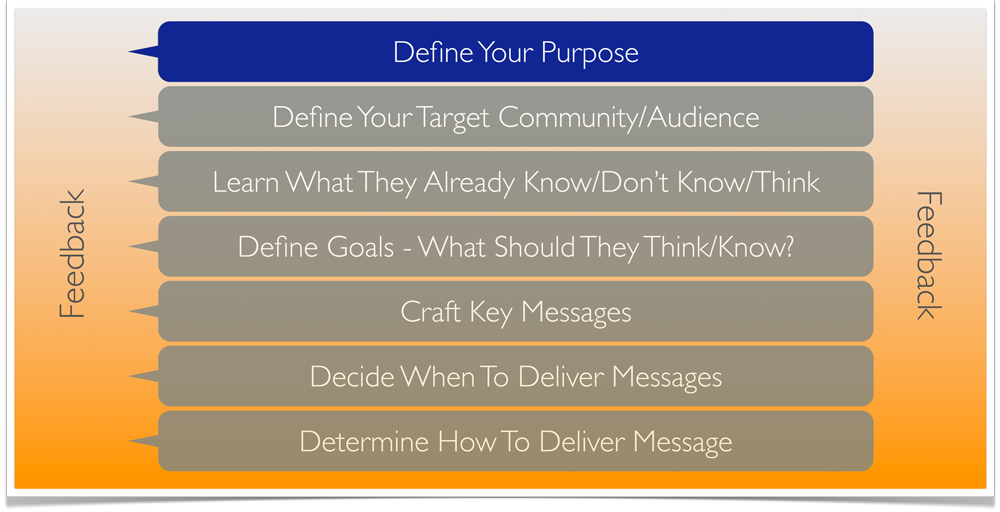
Step 1: Define Your Purpose
Before you start crafting any type of message, ask why you’re doing it in the first place. What is the problem you are trying to solve or the news you want to share? What are you trying to shed light upon? What do you care about and why? Why? Why? Why? When we skip this step, we end up creating content that feels out of place and confusing. We choose channels that don’t make sense. We spend more money than we have to. We hire the wrong people to do the wrong jobs. Basically, without purpose, we’re just talking, or writing, or recording, or whatever. That’s fine when you’re venting. It’s great when you’re reflecting. It’s ineffective when you’re trying to communicate with other people.
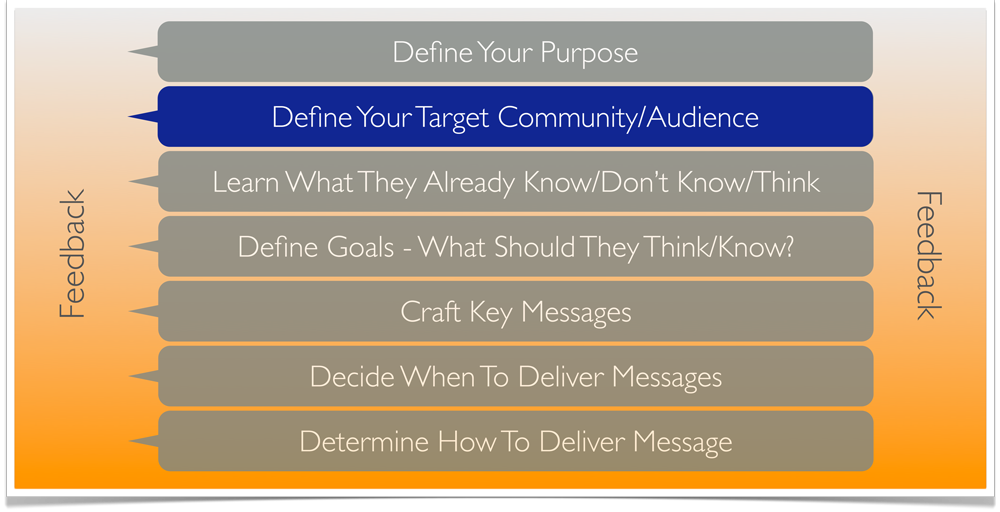
Step 2: Define Your Target Community
In the model, I included the term “target audience” because that is how most traditionalists and students will find it in literature or public discourse. However, I have been trying (Bias Alert!) to shift the language to target community. As Christopher Allen says, “In a conversation there is no audience, only participants.” Whether you’re a marketing person, activist, educator, or otherwise have a need to communicate, using terms like community and/or participants is important for a number of reasons. First, in doing so, we recognize the humanness of the people with whom we are trying to communicate. Secondly, we focus on the likenesses as well as the differences, instead of just differences. I mean, would you prefer to be addressed as your name instead of “consumer”? By engaging with people on a more human level, we create communications and solutions that are more real, better received, and more effective.
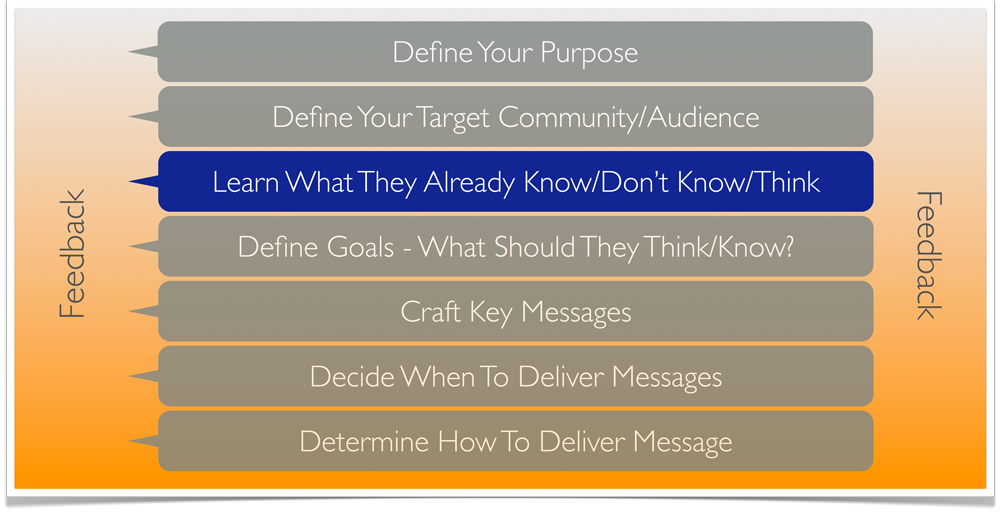
Step 3: Learn What They Already Know/Don’t Know/Think
How many times have you left a class, workshop, conference, or speech when you mumbled to yourself or someone around you, “That was good except I didn’t hear anything I didn’t already know”? How many times have you seen an advertisement that didn’t add any value to you? That’s often because the person or organization is using a canned message. They’ve been doing the same presentation for some time. Maybe they initially delivered it at a conference, then used it at a luncheon, then a gala, then a graduation, each time delivering the same content despite the changing audience. Had the speaker really taken the time to understand each audience and tailor each presentation accordingly, the presentations might have been much more engaging for everyone involved. If it’s you giving the speech or workshop, you will learn so much more in the process of building content that is right for your audience, have more fun, and be invited to more opportunities. By always tailoring your message you also ensure that your information is up to date and relevant with both your audience and your industry.
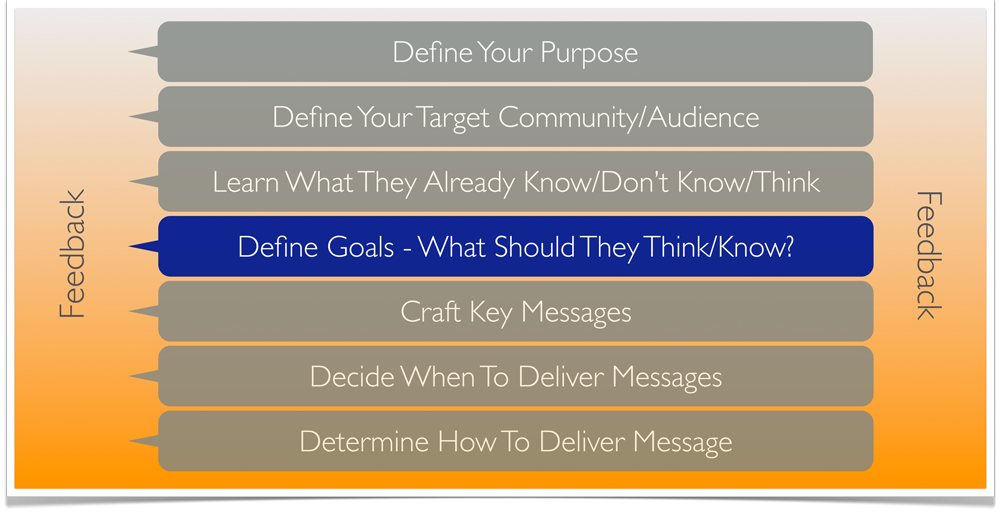
Step 4: Define Your Goals
This is another common step we skip. It’s ironic that we skip this one, because usually it’s how we measure success. Goals should reflect organizational objectives and needs as well as the needs of the target community. Everything must be in line. Everything. Make your goals relevant and make sure you’re asking the right questions. For example, when working with clients and their marketing needs, I often ask them what their goals are. If they have an answer at all, it’s typically to increase profits. This is how I reply to that. “Increasing profits is an outcome, not a goal. When you established this company, you did it to help solve a problem, make something better, do something better, etc. So, what do you really want to do? Reach more people? Solve more hunger?” That’s when we get to the real goals. Hint: make them measurable. “Increase awareness” is not a goal. “Increase awareness by 15% in 30 days” is a goal. Having specific, measurable goals really helps when you have to defend your work. It also helps when you’re trying to figure out how effective the work is.
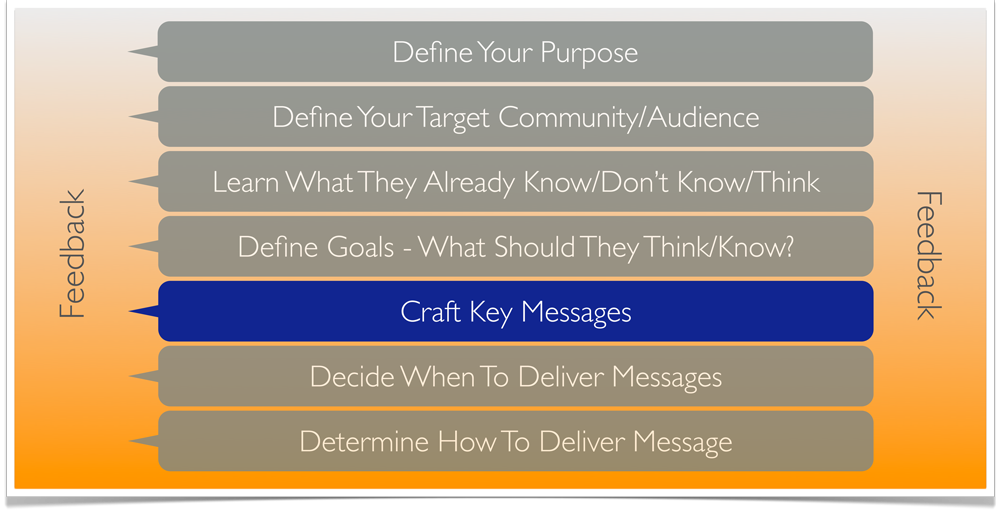
Step 5: Craft Key Messages
Here comes the fun part (well, for most people)—crafting the key messages. After you’ve worked through the other steps, ask yourself what key messages will support your goal and connect with your audience in a meaningful way. What is going to make the largest impact? I normally try to narrow it down to three takeaways. After all, they’re called key for a reason. Make those messages solid, and the content around them will flow. For example, when working with a non-profit group in San Antonio, we discovered that one of the reasons their messaging wasn’t meeting goals was because they were delivering the wrong messages. Once they identified the key things that mattered, they faired much better. Prior to our meeting, the group created messages that mostly discussed how they were different from a competitor. Once we found that what really resonated with their audience was that they were a no-kill shelter. Once we crafted messages that honed in on that message, support and action grew tremendously.
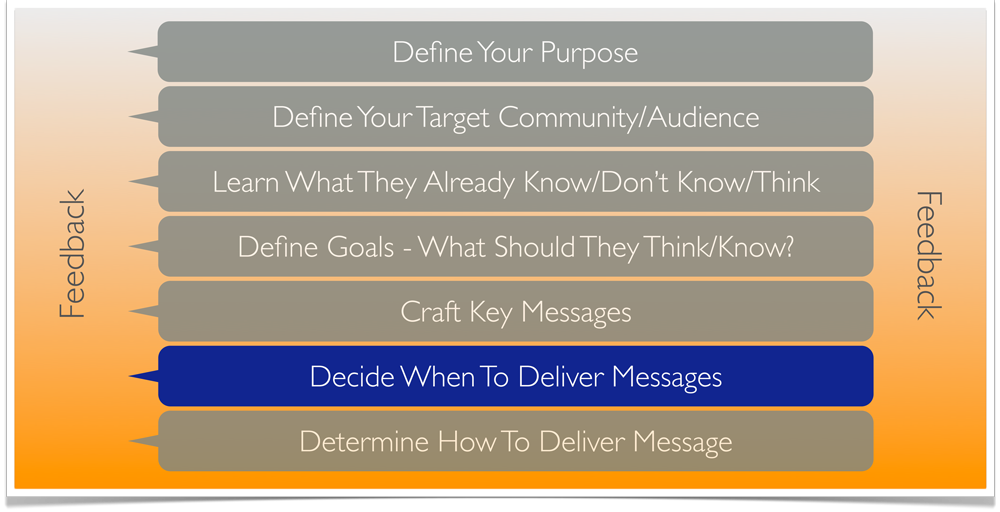
Step 6: Decide When To Deliver Messages
One night, when I was living in Santiago, Chile, my mother called me at midnight. My mother never calls me late at night, and I answered the phone in a panic, expecting bad news. Turns out, she forgot that the time difference put me three hours ahead. Not a big deal in the long term. However, the point I’m trying to illustrate is that timing can make a big difference in how a message is received. It’s not a coincidence that gyms advertise their special new membership rates from December through January. They know that people have been eating everything in sight through the holidays and making New Year’s resolutions while feeling guilty. They also advertise in the spring, right before the summer months and bathing suit season. When deciding when to deliver your messages, think about holidays, political and social climates, and technology, among other things. Apple wasn’t the first one to create a tablet. That honor goes to Microsoft. In 2001 they announced the first tablet PC. The market wasn’t ready. Changes in technology, lifestyle, and supply chains primed the market for Apple just ten years later. Timing is crucial.
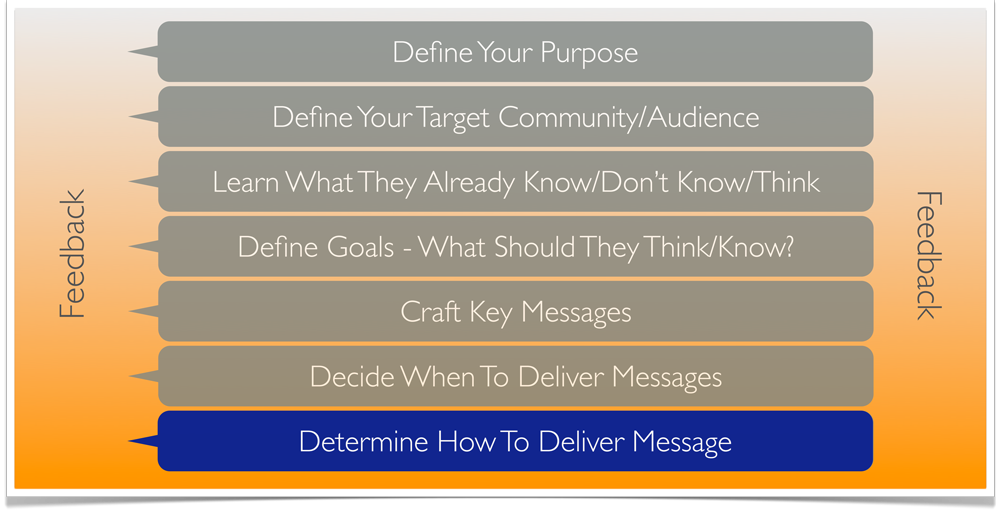
Step 7: Decide How To Deliver Messages
This is THE step that most people jump to without considering anything else. Often, before a person even knows with whom or what they want to communicate, they know that Facebook is the right medium. Deciding how to deliver messages is much more complex then deciding which social media platforms to use. Yes, Facebook might make sense. But does it also make sense to have a community forum, write a press release, blog post, plaster posters on the sidewalk, have a webinar, host a conference, submit an article to a journal, or write a book? If there is one thing you get from this blog post (if you’ve read this far), please keep your target community involved and top of mind in all stages of the communication process. Think about the absolute best ways to reach your participants where they are. Does the message need to be translated? Which media can you afford? Think about class issues. Does your target community have access to the Internet or computers? Maybe they’d best be reached at libraries. Should you be the person to deliver the message? Perhaps the message would be better received if somebody from within the group or culture delivers it. Think about all of these things as you decide how to deliver your message.
What’s Next?
If there is one thing worth adding to the steps above, it’s action. A strategy is meaningless if you never take action. Take action. Measure results. Participate. Make impact.
Stay tuned for more about part two, The Conversation.
